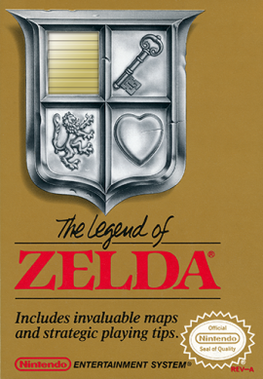
The Legend of Zelda, originally released in Japan as The Hyrule Fantasy: Zelda no Densetsu, is an action-adventure game developed and published by Nintendo. The first game of The Legend of Zelda series, it is set in the fantasy land of Hyrule and centers on an elf-like boy named Link, who aims to collect the eight fragments of the Triforce of Wisdom in order to rescue Princess Zelda from Ganon. The player controls Link from a top-down perspective and navigates throughout the overworld and dungeons, collecting weapons, defeating enemies and uncovering secrets along the way.

In the history of video games, the third generation of video game consoles, commonly referred to as the 8-bit era, began on July 15, 1983, with the Japanese release of two systems: Nintendo's Family Computer and Sega's SG-1000. When the Famicom was released outside of Japan, it was remodeled and marketed as the Nintendo Entertainment System (NES). This generation marked the end of the video game crash of 1983, and a shift in the dominance of home video game manufacturers from the United States to Japan. Handheld consoles were not a major part of this generation; the Game & Watch line from Nintendo and the Milton Bradley Microvision that were sold at the time are both considered part of the previous generation due to hardware typical of the second generation.
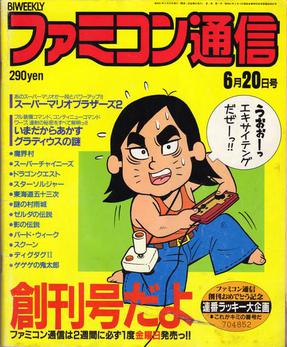
Famitsu, formerly Famicom Tsūshin, is a line of Japanese video game magazines published by Kadokawa Game Linkage, a subsidiary of Kadokawa. Famitsu is published in both weekly and monthly formats as well as in the form of special topical issues devoted to only one console, video game company, or other theme. Shūkan Famitsū, the original Famitsu publication, is considered the most widely read and respected video game news magazine in Japan. From October 28, 2011, the company began releasing the digital version of the magazine exclusively on BookWalker weekly.
1996 saw many sequels and prequels in video games, such as Super Mario 64, Duke Nukem 3D, Street Fighter Alpha 2, Super Mario RPG, King's Field III, Virtua Fighter 3, along with new titles such as Blazing Heroes, NiGHTS into Dreams..., Crash Bandicoot, Pokémon Red/Green/Blue, Resident Evil, Dead or Alive, Quake and Tomb Raider.
1995 saw many sequels and prequels in video games, such as Dragon Quest VI, Mega Man 7, Super Mario World 2: Yoshi's Island, Donkey Kong Country 2: Diddy's Kong Quest, and Tekken 2, along with new titles such as Mario's Picross, Battle Arena Toshinden, Chrono Trigger, Rayman, Soul Edge, Twisted Metal, Star Wars: Dark Forces, Destruction Derby, Wipeout and Jumping Flash!
1992 saw many sequels and prequels in video games, such as Dragon Quest V, Final Fantasy V, Sonic the Hedgehog 2, Street Fighter II: Champion Edition, Super Mario Land 2: 6 Golden Coins, and Super Mario Kart, along with new titles such as Art of Fighting, Lethal Enforcers, Mortal Kombat and Virtua Racing.
1991 saw many sequels and prequels in video games, such as Street Fighter II, Final Fantasy IV, Super Castlevania IV, Mega Man 4, Super Ghouls 'n Ghosts, and The Legend of Zelda: A Link to the Past, along with new titles such as Sonic the Hedgehog, Battletoads, Lemmings, Sunset Riders, Duke Nukem, Fatal Fury: King of Fighters, and Streets of Rage. The year's highest-grossing video game worldwide was Capcom's arcade fighting game Street Fighter II. The year's best-selling system was the Game Boy for the second year in a row, while the year's best-selling home video game was Sega's Sonic the Hedgehog, which was also the year's top video game rental in the United States.
1990 saw many sequels and prequels in video games, such as Metal Gear 2: Solid Snake, Dr. Mario, Dragon Quest IV, Final Fantasy III, Phantasy Star II, and Super Mario World, along with new titles such as Fire Emblem: Shadow Dragon and the Blade of Light and Magic Sword. The year's highest-grossing arcade video games were Final Fight in Japan and Teenage Mutant Ninja Turtles in the United States. The year's best‑selling system was the Game Boy, while the year's best-selling home video game was Super Mario Bros. 3 for the Nintendo Entertainment System.
1988 saw many sequels and prequels in video games, such as Dragon Quest III, Super Contra, Super Mario Bros. 2, Mega Man 2, Double Dragon II: The Revenge, and Super Mario Bros. 3, along with new titles such as Assault, Altered Beast, Capcom Bowling, Ninja Gaiden, RoboCop, Winning Run and Chase H.Q.
1987 saw many sequels and prequels in video games, such as Castlevania II: Simon's Quest, Dragon Quest II, Final Lap, and Zelda II, along with new titles such as After Burner, Contra, Double Dragon, Final Fantasy, Mega Man, Metal Gear, Operation Wolf, Phantasy Star, Shinobi, Street Fighter and The Last Ninja. The Legend of Zelda was also introduced outside of Japan.
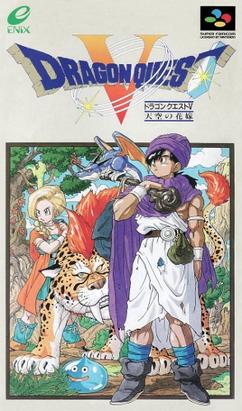
Dragon Quest V: Hand of the Heavenly Bride is a role-playing video game and the fifth installment in the Dragon Quest video game series, second of the Zenithian Trilogy. Originally developed by Chunsoft and published by Enix Corporation, Dragon Quest V was the first title in the series to be released for the Super Famicom video game console in Japan in September 1992. Dragon Quest V was the first game in the series to not be released in America due to programming issues at the time.

Famicom Wars is a wargame developed by Nintendo and Intelligent Systems and published by Nintendo for the Famicom. It was released on August 12, 1988 in Japan. It was later re-released on Virtual Console. It is the first game in the Wars series.
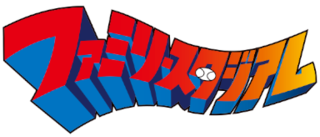
Family Stadium, also known as Pro Yakyū: Family Stadium and Famista, is a series of baseball sports video games initially developed and released by Namco in Japan, and later developed and published by Bandai Namco Entertainment. The first entry in the series, Pro Baseball: Family Stadium, was released for the Nintendo Family Computer in 1986 and later in North America as R.B.I. Baseball, with the series being released on numerous home consoles, the latest being Pro Yakyuu Famista 2020 in 2020 for the Nintendo Switch. The series is considered a precursor to Namco's own World Stadium series of baseball games, released for arcades, PlayStation, and GameCube. The series has been a commercial success since, with over 15 million copies being sold as of 2016.

The Nintendo Entertainment System (NES) is an 8-bit third-generation home video game console produced by Nintendo. It was first released in Japan in 1983 as the Family Computer (FC), commonly referred to as Famicom. It was redesigned to become the NES, which was released in American test markets on October 18, 1985, and was soon fully launched in North America and other regions.

Castlevania, known in Japan as Akumajō Dracula, is a 1986 platform game developed and published by Konami for the Family Computer Disk System. It was originally released in Japan in September 1986, before being ported to cartridge format and released in North America for the Nintendo Entertainment System (NES) in May 1987 and in Europe in 1988. It was also re-issued for the Family Computer in cartridge format in 1993. It is the first game in Konami's Castlevania video game series.

The Japanese video game magazine Famitsu reviews video games by having four critics each assign the game a score from 0 to 10, with 10 being the highest score. The scores of are then added together for a maximum possible score of 40. As of 2024, thirty games have received perfect scores from Famitsu.
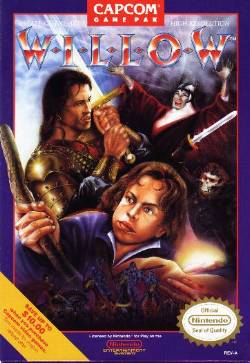
Willow is a 1989 2D action role-playing game developed and published by Capcom for the Nintendo Entertainment System. It is loosely based on the 1988 film of the same name and is the second title Capcom released based on Willow that year, the first being an unrelated side scrolling arcade game. The version of Willow released for the Nintendo Entertainment System and the Famicom is an adventure game in the vein of The Legend of Zelda.

Cocoron is a 1991 video game developed by K2 and published by Takeru for the Famicom. A version for the PC Engine was announced, but was not released.

Pro Baseball: Family Stadium, released as Pro Yakyū: Family Stadium in Japan and R.B.I. Baseball in North America, is a 1986 baseball video game developed and published by Namco for the Nintendo Entertainment System. In North America, it was published by Tengen as R.B.I. Baseball. It was also released in arcades through the Nintendo VS. System. It is the first game in the Family Stadium and R.B.I. Baseball franchises. The game was a critical and commercial success in Japan and North America.










